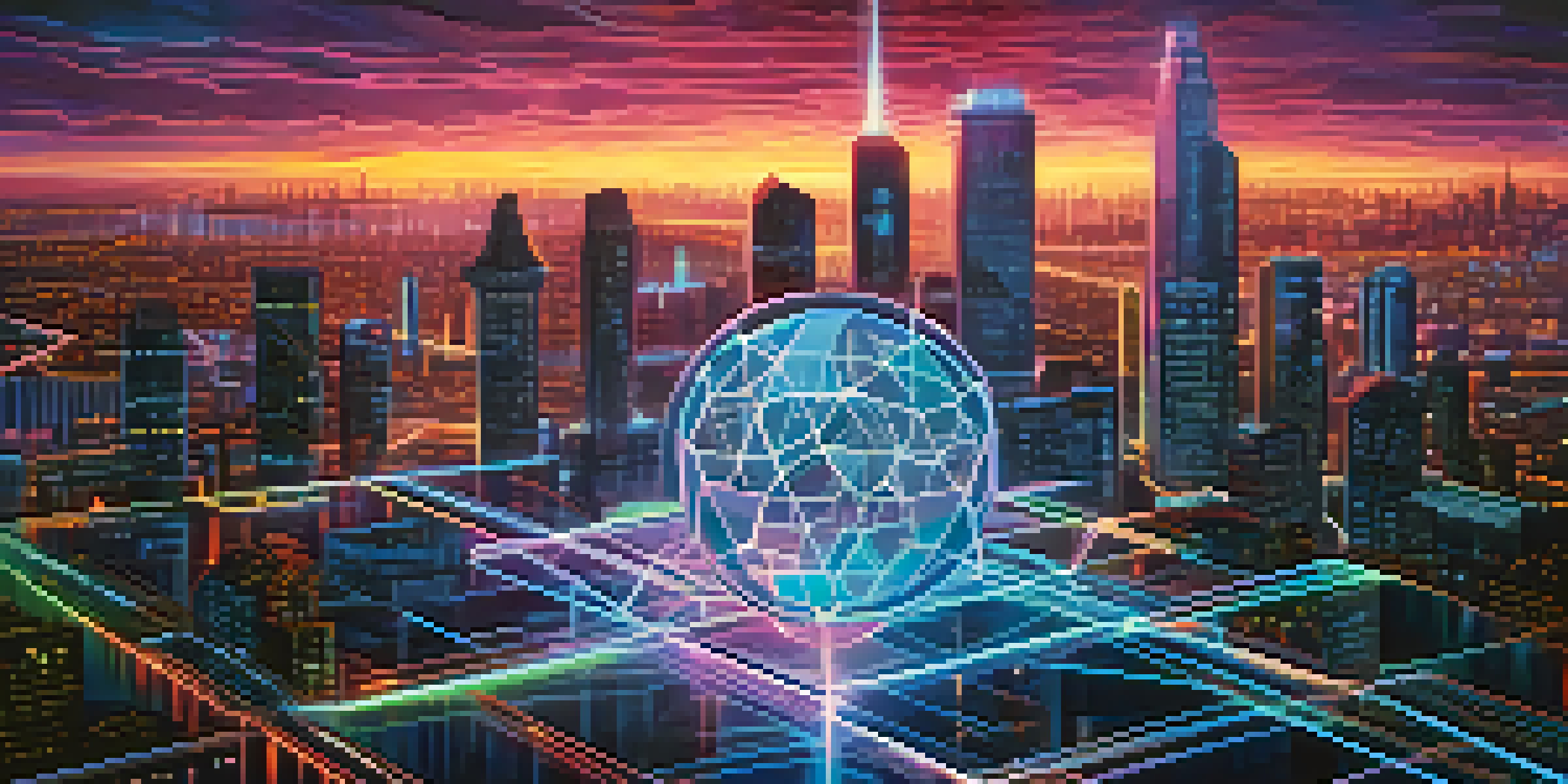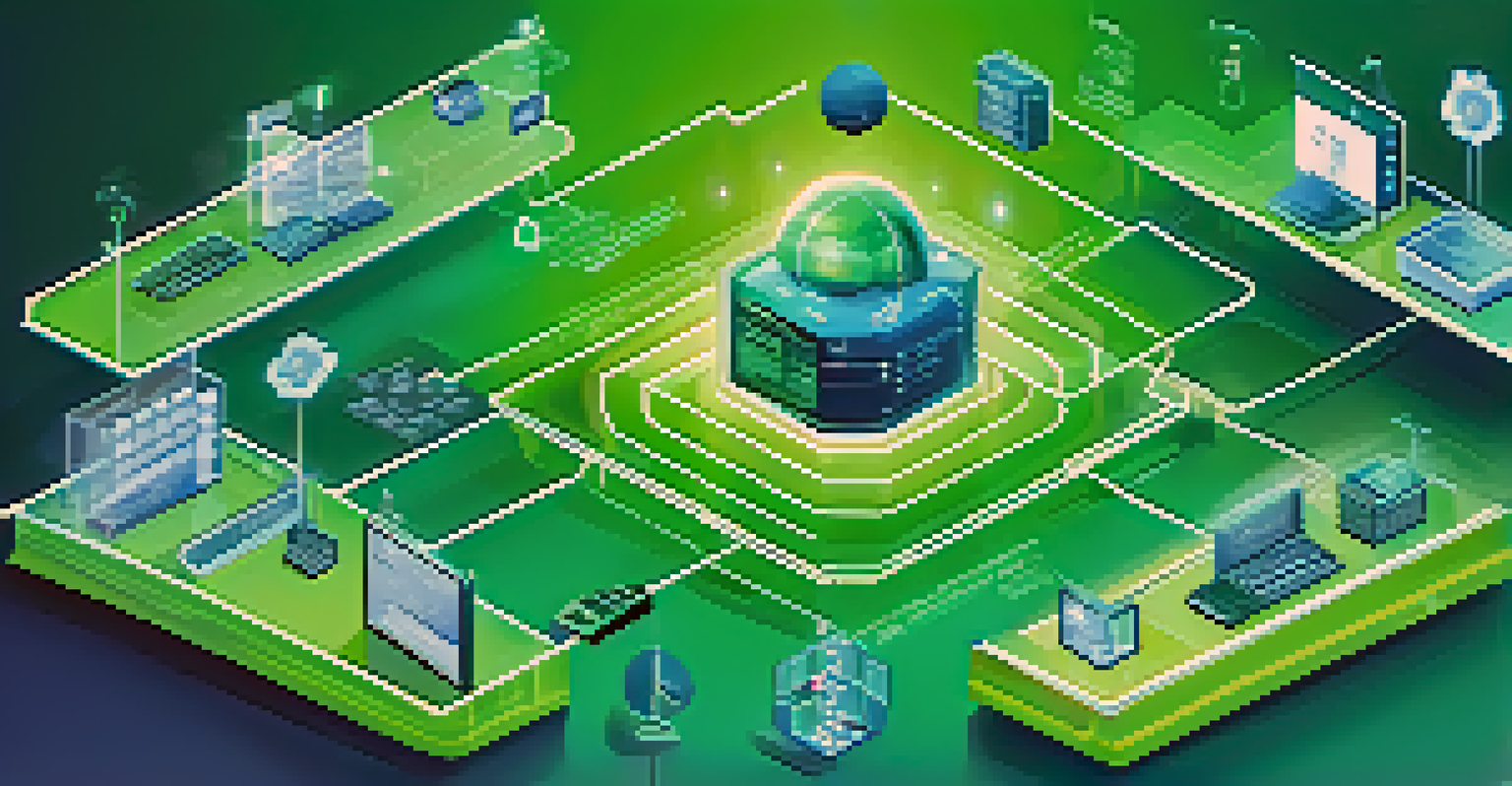Understanding Oracles: The Bridge Between Blockchain and Data

What Are Oracles and Why Do They Matter?
Oracles act as intermediaries that provide smart contracts with external data. In the blockchain world, they are crucial because smart contracts operate in an isolated environment, unable to access real-world information directly. Without oracles, blockchains would be limited in functionality, unable to respond to real-time events or data.
Oracles are the key to connecting smart contracts with real-world data, unlocking the full potential of blockchain technology.
Think of oracles as the messengers delivering important news to a locked room. They bring in information like weather conditions, stock prices, or even sports scores, enabling smart contracts to execute based on that data. This capability expands the potential use cases of blockchain technology significantly.
In essence, oracles bridge the gap between the digital world of blockchain and the dynamic nature of real-world data. By doing so, they enhance the versatility of smart contracts, making them applicable in various industries from finance to supply chain management.
Types of Oracles: Centralized vs. Decentralized
Oracles can be categorized into two main types: centralized and decentralized. Centralized oracles rely on a single source of data, which can create vulnerabilities, such as manipulation or downtime. An example of a centralized oracle is a single API that feeds data into a blockchain.

On the other hand, decentralized oracles aggregate data from multiple sources, providing a more reliable and tamper-proof solution. By collecting data from various independent sources, these oracles minimize the risk of errors or malicious activities. Think of it as crowd-sourcing information to ensure accuracy.
Oracles Enable Smart Contract Functionality
Oracles act as intermediaries that provide smart contracts with essential real-world data, enhancing their functionality and applicability across various industries.
The choice between centralized and decentralized oracles often depends on the specific use case. For instance, applications requiring high security and reliability may favor decentralized oracles, while those prioritizing speed and simplicity might opt for centralized ones.
How Oracles Work: A Step-by-Step Breakdown
The operation of oracles can be broken down into a series of steps that make their function easier to understand. First, a smart contract requests specific data from the oracle, which acts as the intermediary. This request initiates the process, setting the stage for the oracle to gather the necessary information.
In a world of increasing complexity, oracles serve as crucial bridges between the digital and physical realms.
Next, the oracle retrieves the data from various sources, whether they are APIs, databases, or other external systems. Once the data is collected, the oracle verifies its accuracy and integrity before forwarding it to the smart contract. This step is crucial to ensure the smart contract executes based on reliable information.
Finally, the oracle delivers the data back to the smart contract, which can now take action based on the information received. This seamless flow demonstrates how oracles enable real-time interactions between blockchain technology and the outside world, enhancing functionality in numerous applications.
Real-World Applications of Oracles
Oracles are transforming various industries by providing essential data that enhances blockchain applications. For instance, in finance, decentralized finance (DeFi) platforms rely heavily on oracles to obtain accurate price feeds for cryptocurrencies, enabling users to trade and invest securely.
In the supply chain sector, oracles can track the provenance of goods by providing real-time data on location, temperature, and other critical factors. This transparency helps businesses ensure product integrity and compliance with regulations. Imagine knowing exactly where your food came from and the conditions it endured during transport.
Centralized vs. Decentralized Oracles
The choice between centralized and decentralized oracles impacts data reliability and security, with decentralized options offering greater protection against manipulation.
Additionally, oracles are also used in insurance and gaming, where they can trigger automatic payouts based on real-world events. By bridging the gap between blockchain and real-world data, oracles are paving the way for innovative solutions across multiple industries.
Challenges and Limitations of Oracles
Despite their importance, oracles face several challenges that can impact their effectiveness. One significant issue is the potential for data manipulation, especially in centralized oracles where a single point of failure can lead to unreliable information. This vulnerability can undermine the very purpose of using a blockchain.
Another challenge is ensuring the accuracy and reliability of the data collected. As oracles pull information from various sources, discrepancies can arise, leading to incorrect outcomes in smart contracts. This situation can be likened to receiving two different weather forecasts—one might predict sunshine while the other warns of rain.
Moreover, the integration of oracles into existing blockchain frameworks can be complex and resource-intensive. As the technology evolves, it’s essential for developers to address these challenges to enhance the reliability and security of oracles.
The Future of Oracles in Blockchain Technology
The future of oracles looks promising as their role in blockchain technology continues to grow. With the increasing demand for real-time data in decentralized applications (dApps), the development of more sophisticated oracles is on the horizon. Innovations in technology will likely lead to enhanced security measures and improved data verification processes.
As industries adopt blockchain solutions, oracles will play a pivotal role in enabling smart contracts to interact with the outside world seamlessly. This trend will open up new possibilities for automation and efficiency across various sectors, from finance to healthcare.
Real-World Applications of Oracles
Oracles are revolutionizing sectors like finance and supply chain by providing real-time data that enables automated actions and ensures data integrity.
Ultimately, the evolution of oracles could lead to a more interconnected digital ecosystem, where data flows freely and securely between blockchains and external sources. This development will be vital in realizing the full potential of blockchain technology.
Getting Started with Oracles: A Guide for Developers
For developers interested in utilizing oracles, the first step is to choose the right type based on their specific needs. Understanding the differences between centralized and decentralized oracles is crucial, as each has its advantages and disadvantages. This knowledge will help developers make informed decisions when designing their applications.
Next, developers should explore existing oracle solutions, such as Chainlink or Band Protocol, which provide ready-to-use services for integrating data feeds into blockchain applications. These platforms offer robust documentation and support, making it easier for newcomers to get started.

Finally, hands-on experimentation is key. Developers should consider building simple projects that utilize oracles to gain practical experience. By doing so, they will not only deepen their understanding but also contribute to the growing ecosystem of blockchain technology.